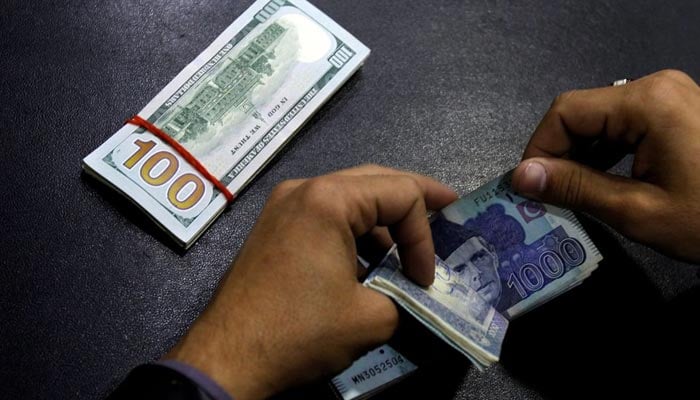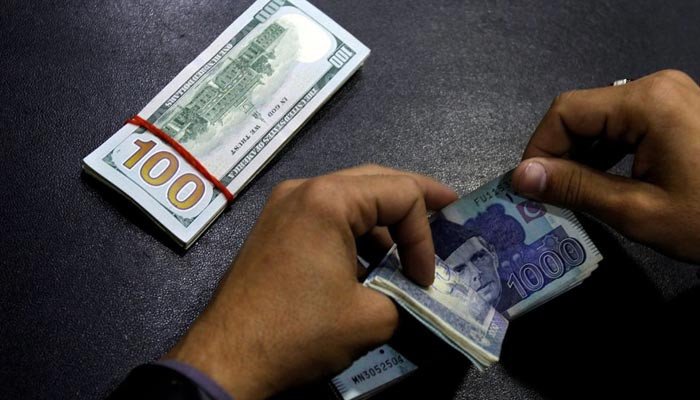[ad_1]

- Analysts believe rupee is unlikely to fall from its current levels.
- “The trend for the rupee is to keep going strong,” forex trader says.
- Inflation to come down in next few months.
KARACHI: Traders and analysts believe that the Pakistani rupee is unlikely to fall from its current levels against the US dollar, which has helped it gain almost 4% this week, The News reported.
However, all eyes will be on the State Bank of Pakistan (SBP) to see whether it will raise the interest rates or keep them at their current levels on Monday.
The rupee continued to appreciate against the greenback despite a decline in the foreign exchange reserves and Moody’s downgrading of the nation’s sovereign credit rating.
Pakistani rupee outperformed major currencies against the dollar during the outgoing week.
On Friday, the rupee ended at 219.92 per dollar, 0.92% stronger than its previous close of 221.94 in the interbank market.
“The trend for the rupee is to keep going strong,” a forex trader said, adding that the exporters were rushing to sell dollars before the local currency appreciated further. “There are sufficient supplies available in the market to match the importer demand.”
According to the dealer, speculative activity had declined because the government appears to have controlled speculative trading.
Foreign reserves held by the SBP fell by $106 million to $7.9 billion in the week that ended September 30. The reserves are adequate to cover 1.13 months of imports.
The decline in the reserves was due to external debt repayment, which includes interest payments on Eurobonds.
The trade deficit fell 31% year-on-year to $2.88 billion in September, according to data from the Pakistan Bureau of Statistics. Exports slightly fell 1% to $2.39 billion in September from $2.41 billion a year earlier. Imports declined 20% year-on-year to $5.27 billion.
For foreign exchange, “we continue to see rupee strengthen to the 210/$ level”, while this momentum could take the dollar lower to 200, “anything below 210 will start hurting exports substantially,” said Tresmark in a note.
“In addition, free subsidy to importers (through cheaper dollars) will add to the economic woes. So while the rupee can be shepherded to the 200 level, economically, it may not be viable, especially in the backdrop of regional currencies making all-time lows (INR touched 82.30/$, OPEC supported oil prices by cutting back on production and the real effective exchange rate, at 220/$, is around 105),” it added.
Most central banks have been intervening to support their currencies (and in a big way too), what worries economists was the fact that the new finance minister has said that his top priority was to strengthen the rupee to at least 200 per dollar level, it said.
“Taking nothing away from a stable currency benefits, they wonder who will talk about the more critical issues of productivity, enabling environment, fiscal space and long-term reforms. For this reason, they feel this is just for optics and short-term political mileage,” it noted.
Most analysts expect the SBP to maintain the policy rate at 15% in its upcoming meeting on October 10 (Monday) as the slowdown in global commodity prices coupled with moderating domestic demand would ease the pressure on the external front.
In addition, inflation would likely come down in the next few months due to a decline in prices of major commodities and a high base effect, according to a report from Insight Securities.
The recent T-bills’ auction also points towards no change in policy rate as yields on all tenors fell moderately.
[ad_2]

